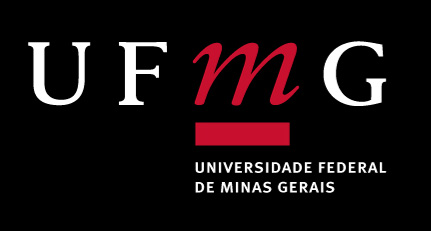Ponderação de variáveis ambientais para a determinação do Potencial de Uso Conservacionista para o Estado de Minas Gerais
DOI:
https://doi.org/10.35699/2237-549X..13439Keywords:
Environmental and Productive Zoning, HydricRecharge Potential, Erosion resistance Potential., Agricultural Use PotentialAbstract
The knowledge of the physical environment is a basic assumptionfor the understanding of the environmental relations and for theordering and planning of the land use on watersheds. TheEnvironmental and Productive Zoning of watersheds has been used officially in Minas Gerais State as a tool for the building and the monitoring of socioeconomic and environmental adequation plans. Its steps are the diagnosis of the hydric availability, land use mapping and the landscape unit definition. In the current procedure, the landscape unit definition is manually made, which requires technical knowledge and experience, and leaves place for subjective interpretation and low reproductibility. This work presents the ponderation criteria for an alternative method, which aims to replace the manual delimitation of the landscape units, called the mapping of the conservative use potential. It was built upon the components“soil”, “lithology” and “slope”. The soil classes were ranked according to the drainage, to the fertility, to the texture and to the effective depth. The lithology classes were ranked according to the chemical and mineralogical composition and to the susceptibility to denudation. The slope classes were ranked according to the agricultural capability criteria. The final score values of the components of the use potential were coherent with the empirical observations of the present land use in the State, suggesting that the method may be used as a viable alternative.
Downloads
References
AGUIAR, M. C.; Silva, A. G. P.; GADIOLI, M. C. B. Caracterização de resíduo demármore para fabricação de rocha artificial.Anais... 22º CBECiMat - Congresso Brasileiro deEngenharia e Ciência dos Materiais. Natal,p. 939-950, 2016.
ANDERSON, D. L. Theory of the Earth. Boston: Blackwell Scientific Publications, 1989. Pgs 147 -177.BERTONI, J.; LOMBARDI NETO, F.Conservação do Solo. Piracicaba:Livroceres, 355p, 1990.
BOWEN, N.L. The evolution of the igneous rocks. Princeton, Princeton University Press, 1928.
CESARE, B; ACOSTA-VIGIL, A; BARTOLI, O; FERRERO, S. What can we learn from melt inclusions in migmatites and granulites? Lithos, Amsterdam, v. 239, p. 186–216, Dezembro de 2015.
CHRISTOFOLETTI, A. Análise morfométrica de bacias hidrográficas. Notícia Geomorfológica, v. 9, n. 18, p.35-64, 1969.
CLARKE, F. W. The data of geochemistry. Report Bulletin. Washington: U.S. Government Printing Office, 1924, p. 770.
CONCEIÇÃO, F. T.; BONOTTO, D.M. Dose de exposiçãoradiométrica e composição dasrochas sedimentares e ígneas na baciado rio Corumbataí (SP). RevistaBrasileira de Geofísica, São Paulo, v.24, n°.1, p. 37-48, Março de 2006.
CONDIE, K. C. Chemical composition and evolution of the upper continental crust: contrasting results from surface samples and shales. Chemical Geology, Amsterdam, v. 104, p. 1-37, 1993.
DALY, R. A.A. Igneous rocks and the depths of the Earth. New York, McGraw – Hill, 1933.
DON, L. A. Theory of the Earth. Blackwell Scientific Publications, Boston, p. 147 -177, 1989.
EVANGELISTA, H. J. Igneous charnockites in the southeastern transition zone between the São Francisco craton and the Costeiro mobile belt, Brazil. Revista Brasileira de Geociências, São Paulo, v. 26, nº. 2, p. 93-102, junho de 1996.
FACHETTI, F. J. S.; COSTA, A. C. D. da; SILVA, C. H. da. Magmatismo cálcio-alcalino Calimiano no embasamento do Terreno Jauru (Província Rondoniana – San Ignácio), Cráton Amazônico: geoquímica e geocronologia Sm-Nd E U/Pb. Brazilian Journal of Geology, São Paulo, v. 46, nº. 1, p. 109-128, março de 2016.
FERNANDES, M. R. et al. Minas Gerais: caracterização de unidades de paisagem. Belo Horizonte: EMATER-MG, 2013. 92 p.
GAO, S., LUO, T.-C., ZHANG, B.-R., ZHANG, H.-F., HAN, Y.-W., ZHAO, Z.-D. HU, Y.-K. Chemical composition of the continental crust as revealed by studies in East China. Geochimica et Cosmochimica Acta, Amsterdam, v. 62, p.1959-1975, junho de 1998.
GOLDICH, S. S.. A study in rock weathering. Journal of Geology. v. 46, nº 1, p. 17–58, 1938.
JAAP, PAUL M.; TAUFEN, SIMON P.VRIEND. An Application ofLithogeochemistry to the Evaluation ofthe Ni-sulphide Ore Potential ofWeathered Serpentinites in theFortaleza de Minas Greenstone Belt,Minas Gerais, Brazil. Journal ofGeochemical Exploration, v. 31, p.57-73, 1988.
KEMP, A.I.S.; HAWKESWORTH, C.J. Granitic Perspectives on the Generation and Secular Evolution of the Continental Crust. In: HOLLAND, H.D.; TUREKIAN, K.K. Treatise on geochemistry. Amsterdam: Elsevier, v. 3, 2003, p. 349-410.
LE MAITRE, R.W. The chemical variability of some common igneous rocks. Journal of Petrology, Oxford, v. 17, p. 589-637, Novembro de 1976.
LINDSEY, D. A. Petrology of Arkosic Sandstones, Pennsylvanian Minturn Formation and Pennsylvanian and Permian Sangre de Cristo Formation, Sangre de Cristo Range, Colorado--Data and Preliminary Interpretations. Washington: U.S. Government Printing Office, 2000, p. 41.
LIRA, W.S.; CÂNDIDO, GA. Gestão sustentável dos recursos naturais: uma abordagem participativa. Campina Grande: EDUEPB, 2013, 325p.
LUZ, A. P.; TOMEDI, P; MARTINS, R. Agalmatolito. In: Luz, A.P.; LINS, F. A. F. Rochas eMinerais Industriais: usos eespecificações. Rio de Janeiro:CETEM/MCT, 2008. p. 69 -78.
MACHADO, F.B.; MOREIRA, C.A.; ZANARDO, A; ANDRE, A.C.; GODOY, A.M.; FERREIRA, J. A.; GALEMBECK, T.;NARDY, A.J.R.; ARTUR, A.C.;OLIVEIRA,M.A.F.DE. Enciclopédia Multimídiade Minerais. [on-line].ISBN:85-89082-11-3 Disponível na InternetviaWWW. URL: http://www.rc.unesp.br/museudpm.Arquivo capturado em 08 de abril de2018.
NAVARRO, G. R. B. et al. Proveniência dos metassedimentos do grupo Araxá na região de Caldas Novas, Goiás. Geociências, São Paulo, v. 36, nº. 2, p. 395 - 413, 2017.
NOVO, T. A. et al. Rochas granulíticas da Suíte Caparaó na região do Pico da Bandeira: embasamento oriental do Orógeno Araçuaí. Geonomos, Belo Horizonte, v. 19, nº.2, p. 70-77, 2011.
OOSTINDIER, J.; TAUFEN, P. M.; VRIEND, S. P. An Application of Lithogeochemistry to the Evaluation of the Ni-sulphide Ore Potential of Weathered Serpentinites in the Fortaleza de Minas Greenstone Belt, Minas Gerais, Brazil. Journal of Geochemical Exploration, Amsterdam, v. 31 p. 57-73, Dezembro de 1988.
PEREIRA, S. B., PRUSKI, F. F., SILVA, D. D., e MATOS, A. D. Desprendimentoe arraste do solo pelo escoamentosuperficial. Revista Brasileira EngenhariaAgrícola e Ambiental, Campina Grande, v. 7,n. 3, p.423-429, 2003.
PINTO, J. F.; STEFFENS, J. L; OLIVEIRA. F.H. Anáise fisico-ambiental urbana da Microbacia do Rio Itacorubi, florianópolis – SC, visando o uso de Spftware SIG. In: Simpósio Brasileiro de Sensoriamento Remoto, 13° edição, 2007, Florianópolis. Anais. [florianopólis]: 2007. P. 3011 -3018.
PIRES E SOUZA, A.A. et al. Estudos geoquímicos de itabiritos da Serra do Sapo, Espinhaço Meridional, Minas Gerais. Geonomos, 22(2), 1-17, 2014.
PONCE, M. B.; GAMBAUDO, P. S. Capítulo V Las rocas carbonaticas. In: Minerales para la Agricultura en Latinoamérica. 2005. Disponível em: <https://intranetua.uantof.cl/salares/parte4-Carbonatos.pdf; http://www.unsam.edu.ar/publicaciones/tapas/cyted/parte1.pdf>. Acesso em 14 jan. 2018.
RABE, Claudio. Estudo experimental da interação folhelho-fluido através de ensaios de imersão. 2003, 286 f. Tese(Doutorado). Pontifícia UniversidadeCatólica de São Paulo. São Paulo, SP.
RAMALHO FILHO, A. BEEK, K.J. Sistema de avaliação da aptidão agrícola de terras. 3ª. Ed. Revisada. Rio de Janeiro, Embrapa – CNPS. 1994. 65 p.
RAPOSO, F. O. Formações ferríferas e metassedimentos químicos de áreas selecionadas do Quadrilátero ferrífero e suas relações com níveis rudáceos. 1996, 71f. Dissertação (Mestrado). Universidade Federal de Minas Gerais, Belo Horizonte.
SAATY, T. L.; SODENKAMP, M. The analytic hierarchy ande analytic network measurement processes: the measurement of intangibes. European Journal of Pure and Applied Mathematics, New York, v. 1, n 1, p, 91-166, 2010.
SANTOS, H. G.; JACOMINE, P. K. T.; ANJOS, L. H. C.; OLIVEIRA, V. A.; LUMBRERAS, J. F.; COELHO, M. R.; ALMEIDA, J. A.; CUNHA, T. J. F.; OLIVEIRA, J. B. Sistema brasileiro de classificação de solos. 3ª ed. revisada e ampliada. Brasília, DF: Embrapa, 2013, 353p.
SECRETARIA DO ESTADO DE MEIO AMBIENTE E DESENVOLVIMENTO SUSTENTÁVEL/ SECRETARIA DE ESTADO DE AGRICULTURA, PECUÁRIA E ABASTECIMENTO – SEMAD/SEAPA. Metodologia para Elaboração do Zoneamento Ambiental Produtivo: ZAP de sub-bacias hidrográficas. 2ª Edição, 2016. Disponível em:<http://www.meioambiente.mg.gov.br/images/stories/2016/ZAP/Metodologia_ZAP_-_2_edicao.pdf>. Acesso em 03 de mai. 2018.
SUN, Ming-Shan; BALDWIN, Brewster. Volcanic Rocks of the Cienega Area, Santa Fe County, New Mexico. Bulletin 54. State Bureau of Mines and Mineral Resources New Mexico Institute of Mining & Technology Campus Station Socorro, New Mexico, 1958, p. 90.
UKAEGBU, V.U.; BEKA, F.T. Petrochemistry and geotectonic significance of enderbite-charnockite association in the Pan-African Obudu plateau, southeastern Nigeria. Journal of Mining and Geology, v. 43, nº.1, p. 1 – 14, 2007.
UNIVERSIDADE FEDERAL DE VIÇOSA; FUNDAÇÃO CENTRO TECNOLÓGICO DE MINAS GERAIS; UNIVERSIDADE FEDERAL DE LAVRAS; FUNDAÇÃO ESTADUAL DO MEIO AMBIENTE. Mapa de solos do Estado de Minas Gerais: legenda expandida. Belo Horizonte: Fundação Estadual do Meio Ambiente, 2010. 49p.
USGS - United States Geological Survey. Shuttle Radar Topography Mission (SRTM) - 1 Arc-Second Global. Disponível em: < https://earthexplorer.usgs.gov/>. Acesso em: 03 fev. 2018.
Downloads
Published
Versions
- 2022-10-21 (2)
- 2018-07-06 (1)
How to Cite
Issue
Section
License
Copyright (c) 2018 Revista Geografias

This work is licensed under a Creative Commons Attribution 4.0 International License.
Os artigos desta revista obedecem a licença Creative Commons — Attribution 4.0 International — CC BY 4.0









